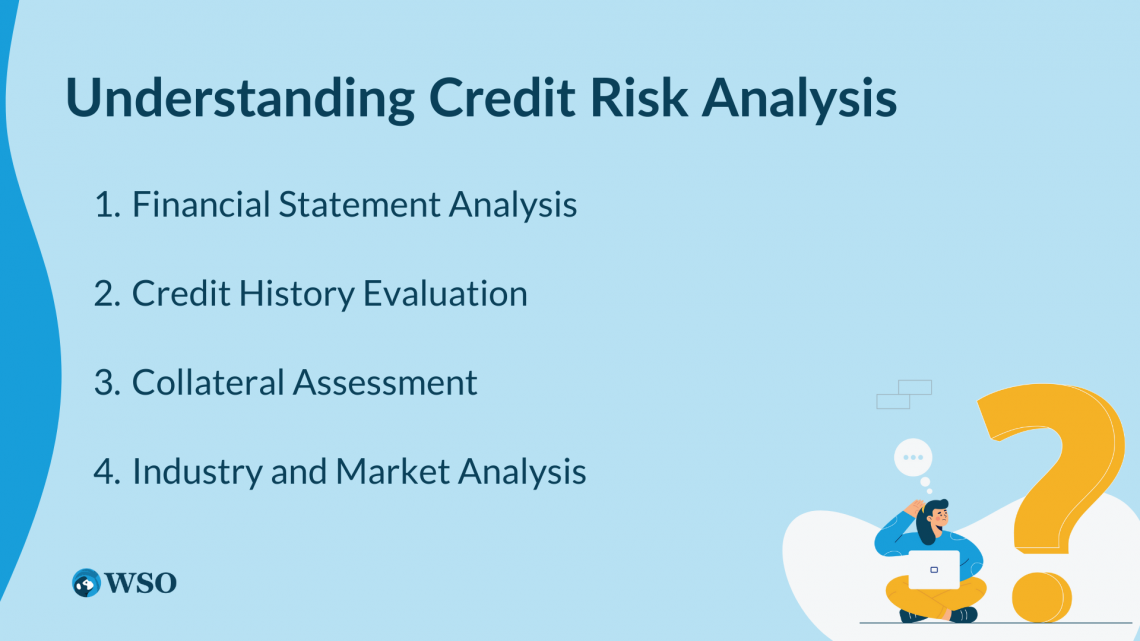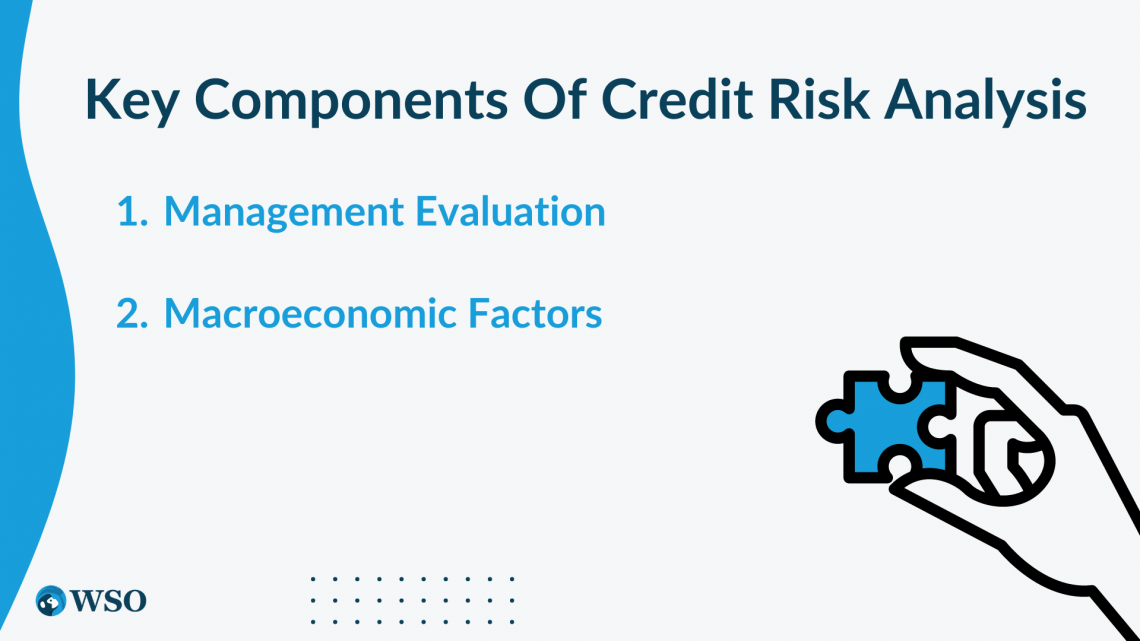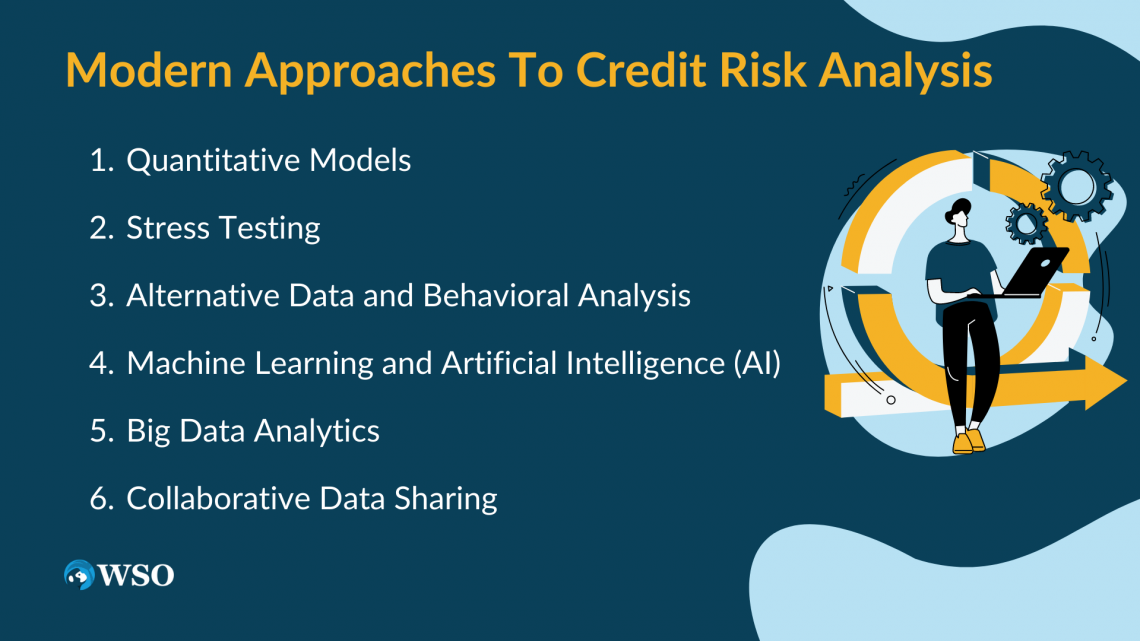Credit Risk Analysis
Credit risk analysis is essential for financial institutions' stability and the health of economies, as it assesses the likelihood of borrowers defaulting on debt obligations.
What is Credit Risk Analysis?
Credit Risk Analysis is a critical finance procedure that underlies financial institutions' stability and the broader health of economies.

As lenders give credit to people, organizations, and governments, the inherent risk of default needs a thorough evaluation of borrowers' creditworthiness.
Lenders can identify possible risks and make educated judgments by evaluating numerous aspects such as financial statements, credit history, collateral, and market circumstances.
This essay delves into the fundamentals of credit Risk Evaluation, emphasizing its importance in ensuring financial stability and promoting ethical lending practices.
Credit risk analysis is a crucial process lenders use to assess the likelihood of borrowers defaulting on their debt obligations. It involves gathering relevant information about the borrower such as:
- Financial statements
- Credit history
- Income sources
- Collateral
Financial statement analysis evaluates the borrower's financial stability and performance by examining liquidity, profitability, and leverage ratios. Credit history is reviewed to assess past repayment behavior and any adverse credit events.

Risk scoring and rating systems are used to quantify the level of risk associated with extending credit. Collateral, if provided, is evaluated for its quality, value, and marketability. Additionally, industry and market analysis are considered to understand potential risks and challenges.
Based on the analysis, lenders make credit decisions, such as approving or rejecting applications, determining credit limits, and setting interest rates.
Credit risk analysis is a complex process requiring expertise in financial analysis, risk assessment, and industry knowledge, often supported by sophisticated models and tools.
Ultimately, it enables lenders to make informed decisions about extending credit while managing the associated risks effectively.
Key Takeaways
- Credit risk evaluation is essential for financial institutions' stability and the health of economies, as it assesses the likelihood of borrowers defaulting on debt obligations.
- The key components of credit risk analysis include financial statement analysis, credit history evaluation, collateral assessment, industry and market analysis, management evaluation, and consideration of macroeconomic factors.
- Modern approaches to credit risk analysis leverage quantitative models, stress testing, alternative data, machine learning, artificial intelligence, and big data analytics to enhance accuracy and efficiency.
Understanding Credit Risk Analysis
Credit Risk Evaluation is a comprehensive procedure that involves evaluating the possible hazards of granting credit to borrowers. Its major purpose is to assess borrowers' creditworthiness and predict the possibility of debt default or non-payment.

By completing a thorough credit risk evaluation, lenders may make educated judgments about lending conditions, interest rates, and loan amounts, reducing possible losses and maintaining portfolio stability.
Several key components contribute to a comprehensive credit risk evaluation:
1. Financial Statement Analysis
This component examines the borrower's financial statements, including balance sheets, income statements, and cash flow statements.
By analyzing these papers, lenders can acquire insights into the borrower's financial health, liquidity, profitability, and capacity to satisfy loan commitments.
Note
Key financial ratios and metrics are often used to assess the borrower's financial performance and determine their repayment capacity.
2. Credit History Evaluation
Evaluating borrowers' credit history is vital in understanding their past behavior and repayment patterns.
Lenders review credit reports that provide a comprehensive record of the borrower's credit accounts, payment history, outstanding debts, and any public records such as bankruptcies or foreclosures.
A positive credit history demonstrates a reliable payment track record, while negative marks may raise concerns about the borrower's ability to fulfill their obligations.
3. Collateral Assessment
In cases where borrowers provide collateral to secure a loan, evaluating the quality and value of the collateral becomes an essential aspect of credit risk evaluation. Lenders assess the adequacy of the collateral in covering potential losses in the event of default.
Note
Factors such as market value, liquidity, and enforceability of the collateral are considered to determine its effectiveness as a risk mitigation mechanism.
4. Industry and Market Analysis
Understanding the borrower's industry and the overall market conditions is crucial for assessing credit risk. To gauge the borrower's ability to generate revenue and repay debts, lenders analyze factors such as industry growth, competition, and market trends.
Stable and growing industries are generally considered less risky, while those facing challenges or volatility may pose higher risks to lenders.
By considering these key components, lenders can view the borrower's creditworthiness holistically and make informed lending decisions.
Key Components Of Credit Risk Analysis
Credit Risk Evaluation thoroughly examines many aspects to assess borrowers' creditworthiness and estimate the possible hazards connected with lending. The key components of credit risk analysis include:

1. Management Evaluation
Credit Risk Evaluation includes evaluating the ability and integrity of the borrower's management team.
Lenders examine key management personnel's experience, qualifications, and track record to gauge their ability to make sound business decisions, manage financial resources effectively, and navigate challenges.
2. Macroeconomic Factors
Credit Risk Evaluation also considers macroeconomic factors that may impact a borrower’s ability to repay debts. These determinants include interest, inflation, currency, political stability, and overall economic circumstances.
Changes in these variables can influence a borrower's financial position and creditworthiness.
By considering these crucial components, lenders may make educated judgments about lending terms and circumstances, such as interest rates, loan amounts, and repayment schedules.
Note
The comprehensive evaluation of these factors helps lenders assess credit risk accurately and take appropriate measures to mitigate potential losses.
Modern Approaches To Credit Risk Analysis
These approaches leverage sophisticated models and alternative data sources to enhance the accuracy and efficiency of assessing credit risk. Here are some key modern approaches to credit risk analysis:

1. Quantitative Models
It utilizes statistical techniques and machine learning algorithms to analyze large volumes of data and identify patterns that can predict default probabilities.
These models incorporate variables such as financial ratios, historical credit data, economic indicators, and borrower characteristics to generate credit scores or risk ratings.
Credit scoring models and credit portfolio models are commonly used quantitative tools to assess credit risk at both individual and portfolio levels.
It involves subjecting credit portfolios to simulated adverse scenarios to assess their resilience. It helps lenders evaluate the potential impact of economic downturns, market shocks, or specific events on borrowers' ability to repay debts.
Note
By stress testing their portfolios, lenders can identify vulnerabilities, quantify potential losses, and develop risk mitigation strategies to withstand adverse conditions.
3. Alternative Data and Behavioral Analysis
The availability of vast amounts of alternative data has opened new avenues for credit risk analysis. By incorporating alternative data into credit risk models, lenders can gain a more comprehensive and dynamic view of a borrower's financial behavior and repayment capacity.
4. Machine Learning and Artificial Intelligence (AI)
These technologies can analyze large datasets, detect complex patterns, and generate predictive models.
Note
Machine learning algorithms can continuously learn from new data, adapt to changing market conditions, and enhance the accuracy of credit risk assessments.
5. Big Data Analytics
The availability of big data has transformed credit risk analysis. Big data analytics enables lenders to uncover hidden relationships, detect early warning signs, and improve the accuracy of credit risk predictions.
6. Collaborative Data Sharing
Collaborative data-sharing platforms and initiatives allow lenders to pool and share anonymized data for credit risk analysis. Lenders can gain deeper insights into industry trends, emerging risks, and potential defaults by leveraging collective intelligence and shared data.
Note
Collaborative data sharing enhances risk assessment capabilities, particularly for smaller lenders or those with limited data resources.
These modern approaches to credit risk analysis offer lenders more robust tools and insights to make informed lending decisions, manage credit portfolios effectively, and mitigate potential risks.
By incorporating advanced analytics, alternative data, and automation, lenders can enhance their risk management practices and maintain a healthier lending environment.
Credit Risk Analysis FAQs

Credit Risk Evaluation is a process of evaluating the creditworthiness of borrowers to assess the likelihood of default or non-payment of debts.
It involves analyzing various factors, such as financial statements, credit history, collateral, industry trends, and macroeconomic factors, to make informed lending decisions.
Credit risk analysis is crucial for financial institutions and lenders to assess the potential risks associated with extending credit.
It helps preserve the stability of portfolios, mitigates losses, makes prudent lending decisions, and maintains the overall health of the financial system.
The key components of credit risk analysis include financial statement analysis, credit history evaluation, collateral assessment, industry and market analysis, management evaluation, and consideration of macroeconomic factors.
These components provide a comprehensive understanding of the borrower's creditworthiness and potential risks.
Credit Risk Evaluation influences lending decisions by providing insights into borrowers' ability to repay debts and the potential risks. Lenders use this analysis to determine loan amounts, interest rates, repayment terms, and collateral requirements.
It helps manage risk and make informed decisions to protect the lender's interests.
Modern approaches to credit risk analysis include quantitative models that employ statistical techniques and machine learning algorithms, stress testing to assess portfolio resilience, alternative data, and behavioral analysis.
To assess their resilience, stress testing involves subjecting credit portfolios to simulated adverse scenarios, such as economic downturns or market shocks.
It helps lenders identify potential vulnerabilities, quantify potential losses, and develop risk mitigation strategies to withstand adverse conditions.
Machine learning and artificial intelligence techniques automate processes, analyze large datasets, and generate predictive models.
They improve the accuracy of credit risk assessment by detecting patterns, adapting to changing market conditions and enabling real-time decision-making.









or Want to Sign up with your social account?